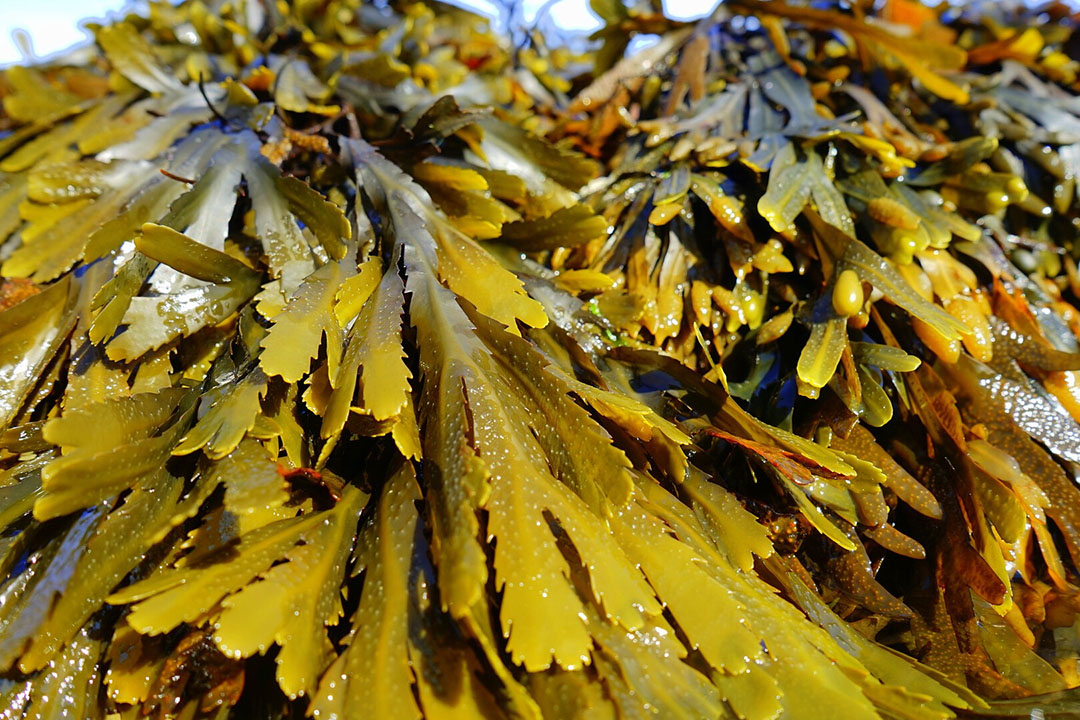Seaweeds from marine waters for animal nutrition

The increasing demand for animal protein by the growing world population intensifies the exploration of novel feed sources. A study evaluated the nutritional value of 6 intact seaweed species collected from the coast of Ireland, Scotland and France as an ingredient for animal feed. The nutrient composition, in vitro digestibility, and in vitro gas production simulating rumen fermentation were determined.
The extension of marine biomass production by wild harvest and large-scale cultivation of seaweed could significantly contribute to biomass production for feed as well as food. Advantages of seaweed production are the use of salt instead of fresh water, sea instead of arable land-based production, and high productivity in terms of biomass produced per unit of surface area.
The chemical composition of 13 different samples of 6 seaweed species classified as brown, red and green seaweeds show large variation between and also within species, depending on, for example, season of harvest, geographical characteristics and environmental factors. The aim of this study was to evaluate the nutritive value and the variation in nutritive value of intact seaweeds obtained from coastal waters in Northwestern Europe as a source of macro nutrients, for application in animal feeds.
The 6 seaweed species were the brown species Saccharina latissima, Laminaria digitata, and Ascophyllum nodossum, the red species Palmaria palmata and Chondrus crispus and green species Ulva lactuca.
Variable nutrient content
The nutrient contents (g/kg dry matter), both between and within species, were highly variable, ranging from 45–248 for crude protein, 351–691 for non-starch polysaccharides, and 173–445 for ash. Overall, the brown seaweeds had the highest non-starch polysaccharides content, whereas samples of the red and green seaweeds had an amino acid content up to 265 g/kg dry matter. All samples had a substantial non-protein nitrogen fraction, varying from 0.12–0.29 of nitrogen. The fibre fractions of brown seaweeds showed different properties than land-based plants, as illustrated by a lower analysed neutral detergent fibre than acid detergent fibre content. The ileal organic matter and nitrogen digestibility, as well as the total tract organic matter digestibility were lower for all seaweeds compared to soybean meal.
 Seaweed: A potential feed for ruminants
Seaweed: A potential feed for ruminants
According to a study of Norwegian harvested seaweed, in which researches of Aarhus University have participated, using seaweed can be a potential feed for ruminants.
S. latissima, L digitata, P. palmata and U. lactuca had a higher maximum gas production than alfalfa, but lower than sugar beet pulp. Based on the protein content and amino acid-pattern, intact P. palmata and U. lactuca would be a valuable protein source for farm animals, with the high non-starch polysaccharides and non-protein nitrogen contents and a low in vitro digestibility potentially limiting their use as a feed ingredient for monogastric species. The fermentability of L. digitata, S. latissima and P. palmata indicate that these intact seaweeds may have a higher nutritional value in ruminants. The high ash content in all seaweed species hampers the use of intact seaweed for both ruminants and monogastrics. Extraction of protein and other favourable components, while reducing the ash content, seems an important step towards seaweed inclusion in animal diets.
This study, which has been published on Science Direct, was conducted by P. Biller, L. Stokvis, M.M. van Krimpen, P.G. van Wikselaar and J.W. Cone at Wageningen University & Research, Wageningen Livestock Research, as well as Wageningen University & Research, Animal Nutrition Group in Wageningen, the Netherlands.











